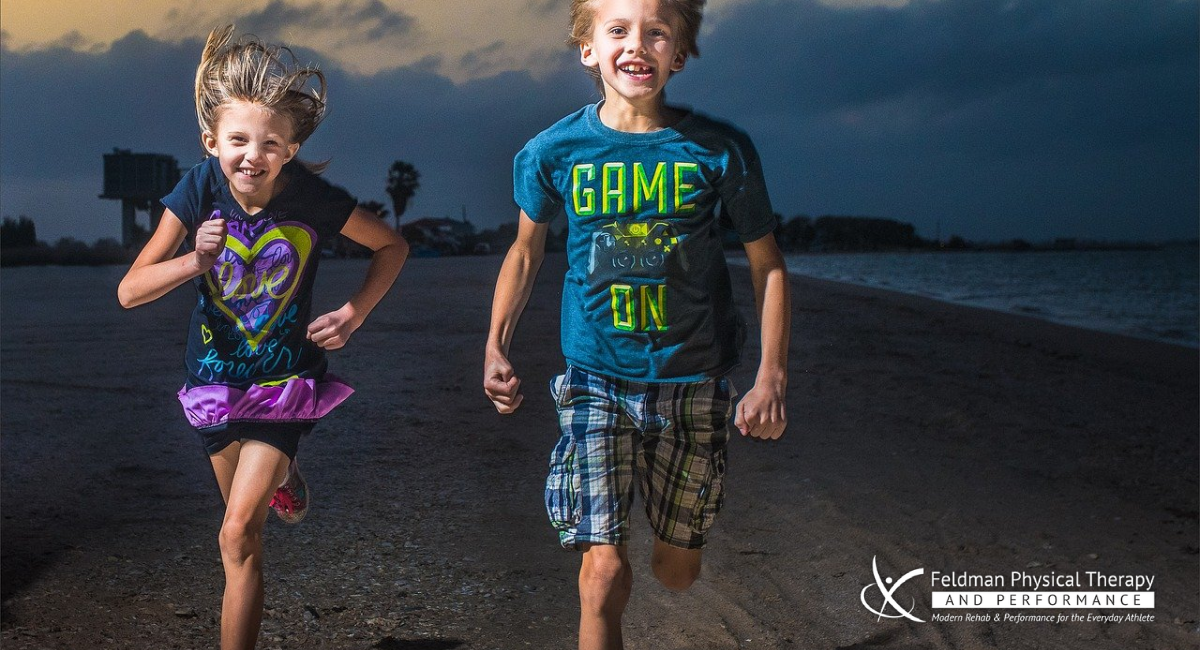
The Two Most Important Exercises To Be Able To Execute
November 8, 2020
Staying Safe During COVID-19
November 17, 2020Should I Let My Child Run for Exercise?
Up to Date Information for Parents Regarding Young Runners
 I cannot tell you how many times I have been asked the question, “Is it okay if my daughter or son runs with me for exercise?”. Well, folks, I thought today was the day where I was going to be able to blow your minds with myriad amounts of new information. Keywords, I thought.
I cannot tell you how many times I have been asked the question, “Is it okay if my daughter or son runs with me for exercise?”. Well, folks, I thought today was the day where I was going to be able to blow your minds with myriad amounts of new information. Keywords, I thought.
Just a few days ago, the most recent consensus statement regarding youth running was released and published by the British Journal of Sports Medicine. This 12-page article written by Kraback, et al., has been something many of us have been longing for an exceptionally long time. It is something I thought may shed a bit lighter on a situation that continues to be misrepresented and not very well understood.
After these authors performed a review of over 106 articles, what they determined is that research regarding youth running continues to be lacking. There are many things that we do know, especially in relation to running-related injuries, injury risk, and prevention. However, when it comes to age-related distance marks and intensity goals, we still do not have many scientific answers and our best knowledge continues to be based on expert opinions.
Let me summarize a few of the key things I found important in this article (some of these you may recognize from several of my older posts):
- Youth runners are most vulnerable to injury during rapid growth phases. These typically occur around 12 years old in females and 14 years old in males. (Note, these numbers are based on research; however, paying attention to growth patterns in your children is extremely important).
- Children should have at least 60 minutes of free-play daily. If running is involved, it may be beneficial to implement games to improve brain development & motor skills.
- In youth runners, it is extremely important to implement a strength-based program consisting of jumping, plyometrics, and balance training. Multi-directional & unpredictable movements are shown to increase bone health in children.
- Generalized research regarding sporting activities states that children are at a greater risk of overuse injuries if they participate in one sporting activity > 8 months per year. It also notes that children are at a greater risk for injury if they participate in a single sporting activity more than 3 hours per week greater than their age. Guidelines also recommended that young athletes have at minimum one rest day per week and several weeks off every 3 months.
- Height, weight, nor age as independent variables have a minimal positive or negative correlation with running-related injury risk among male and female athletes. However, females with a BMI < 19 are at a higher risk for a bone stress injury and other health-related issues.
- For female athletes with a delayed onset of the menstrual cycle, abnormal menstrual cycles, or missing menstrual cycles, there is a significant increase in bone stress injury risk.
- Young females tend to have more running-related injuries than males.
- Early running does not demonstrate negative evidence relating to long-term cardiovascular function; however, early training & long term benefits are not well studied.
- History of a prior stress fracture in males or females is associated with a 6 times increased likelihood of future stress fracture.
- Youth athletes of both sexes require appropriate Energy Availability (EA) to promote optimal sports performance and growth. All young runners should be screened for Relative Energy Deficiency in Sport (RED-S) and disordered eating.
- Running recommendations based on expert opinion for age groups are as follows.
- Early Elementary: variable recommendations- 800m or less OR no > 1 mile.
- Upper elementary: variable recommendations- 1600 m or less OR 1.5-3 miles.
- 12 Years +: 5K distance is appropriate
- 18+ Years: Marathon distance is appropriate
Now, obviously that last bullet is what we have all been waiting for. However, here is the kicker. There are two studies that have been performed observing youth athletes over a period of training for varying marathons. One study included children ages 7-17 and another 12-18. What did these studies show? Although pain did present for some runners during training, most of the time, they did not linger and dissipate fairly quickly. What is also to be said, is that with supervised and well-programmed training, children may be at a low risk for injury when running increased distances.
I hope the information you read above sheds some light on some pertinent information when it comes to childhood running. There are many more important things in this article; however, I listed the ones I feel needed to be shared. It is still my recommendation that young individuals focus on multi-directional weight-bearing sports early on in development to help improve motor skills, coordination, and bone health. However, if a child participates in regular free play or multi-directional sporting tasks, who is to say your child cannot join you on a run here and there ?!
Training health youth athletes is something I can discuss for days. Please do not hesitate to reach out if you have any questions or concerns about any of the information written above! Happy Running.
References
Kraback, et al. Youth running consensus statement: minimizing risk of injury and illness in youth runners. Br J Sports Med 2020; 0:1-14

Ashley Witson, PT, DPT





